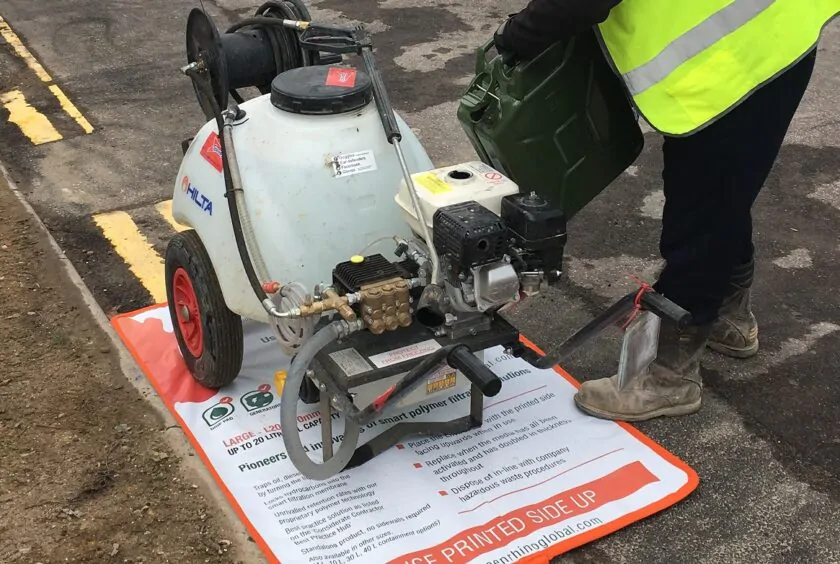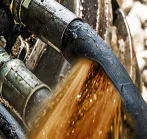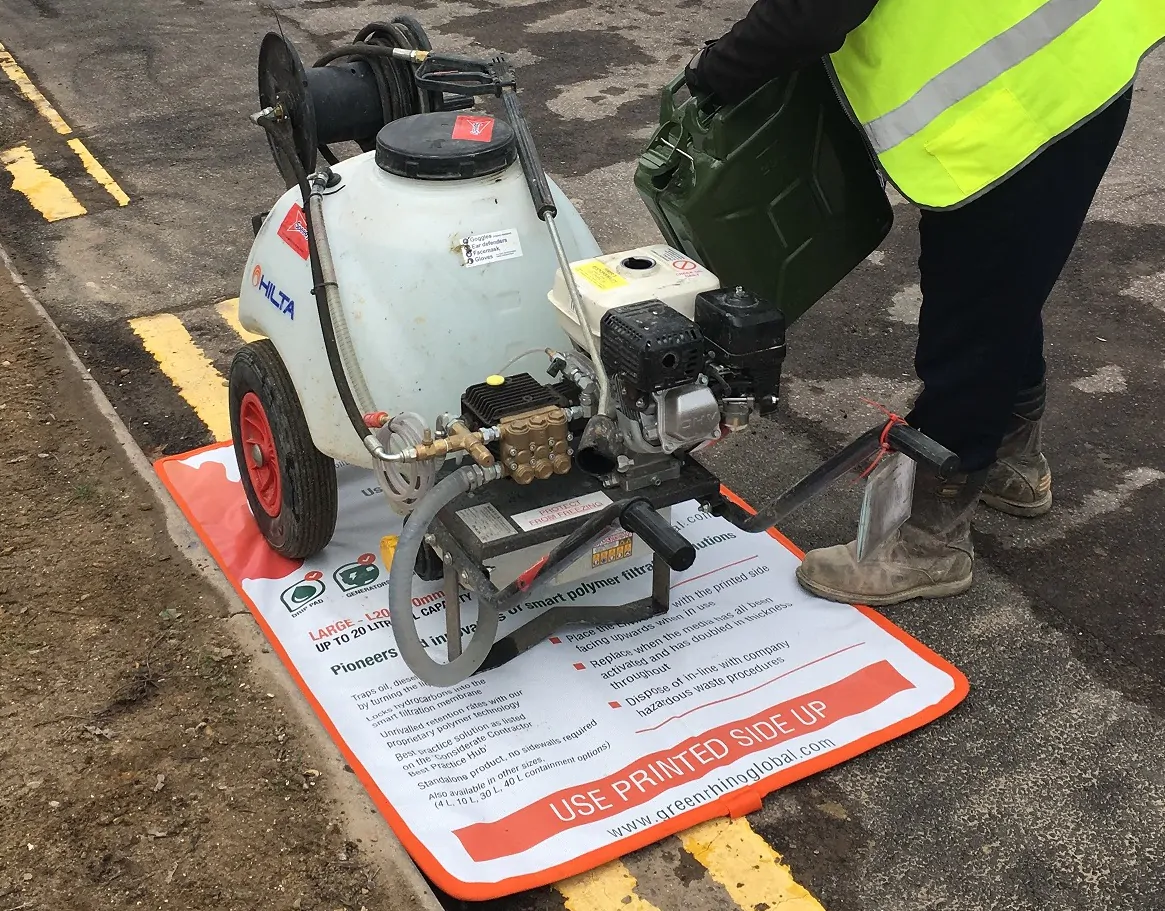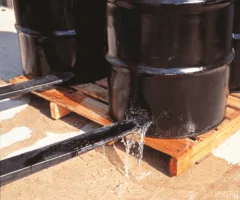Spill Mat, Bund or Spill Kit – A Brief Guide to Spill Control

When is it OK to rely on spill kits to clean up spills and when must you use a spill mat or a bund? Find out in this brief guide to reactive and proactive spill control, specifically regarding hydrocarbons, on construction sites.
The key driver here is the level of risk. How predictable is the spill scenario and what volume of liquid is involved?
Spill Kits – Unpredictable Accidents
Spill kits are reactive spill control products. They are used to clean up unexpected or unpredictable accidents. For example, the hydraulic hose on a tower light might rupture and spray hydraulic fluid onto the ground.

Whilst a tower light should at the very least have a spill mat positioned underneath the engine and fuel tank (see section below), a ruptured hydraulic hose is likely to spray hydrocarbons in an uncontrolled fashion. On a hard surface, this would need to be cleaned up with a spill kit. Absorbent socks could be used to contain the spill whilst it was mopped up, or to keep the spill away from drains and gullies.
Spill Mats – Predictable Low-risk Accidents
Spill mats like the Green Rhino EnviroPad and spill trays are a proactive approach to preventing predictable but limited spills. For example, motorised equipment – anything from a handheld saw to a generator or a tower light – contain lubricating engine oil and fuel. It is a common occurrence for engine oil to drip out and for workers to spill small amounts of fuel when refuelling.

Spill pads or spill trays are used to prevent these oil leaks and refuelling spills from polluting the environment. It is low risk due to the small volumes but predictable.
What prevents this being a high-risk pollution scenario is that it is unlikely that all the engine oil or fuel is going to leak out – this would involve catastrophic damage to the equipment which would be classed as an accident.
Bunds – Predictable High-risk Accidents
There are some scenarios, however, where a spill pad or spill tray is not sufficient pollution prevention. For example, if you are storing oil drums outside, and moving them around by forklift, then there is a reasonable risk that a container might be pierced by one of the forks. This could result in a large volume of oil being spilled. In scenarios like this, containers must be stored on a bund.

For drum storage, the bund must have a capacity of 25% of the maximum volume of material stored. For example, if a bund can hold four 205L drums then the capacity of the bund must be at least 205L even if only one drum is stored on it.
For tanks, IBCs and bowsers, the bund must have a capacity equal to at least 110% of the total volume of the container.
Steel fuel bowsers are stronger than drums and designed to withstand this kind of damage. Instead, the main risk is drips and small spills from the fuel nozzle when refuelling so they can be used in conjunction with spill mats like the EnviroPad.
For official guidance on the storage of hazardous liquids, you might find the following links helpful:
